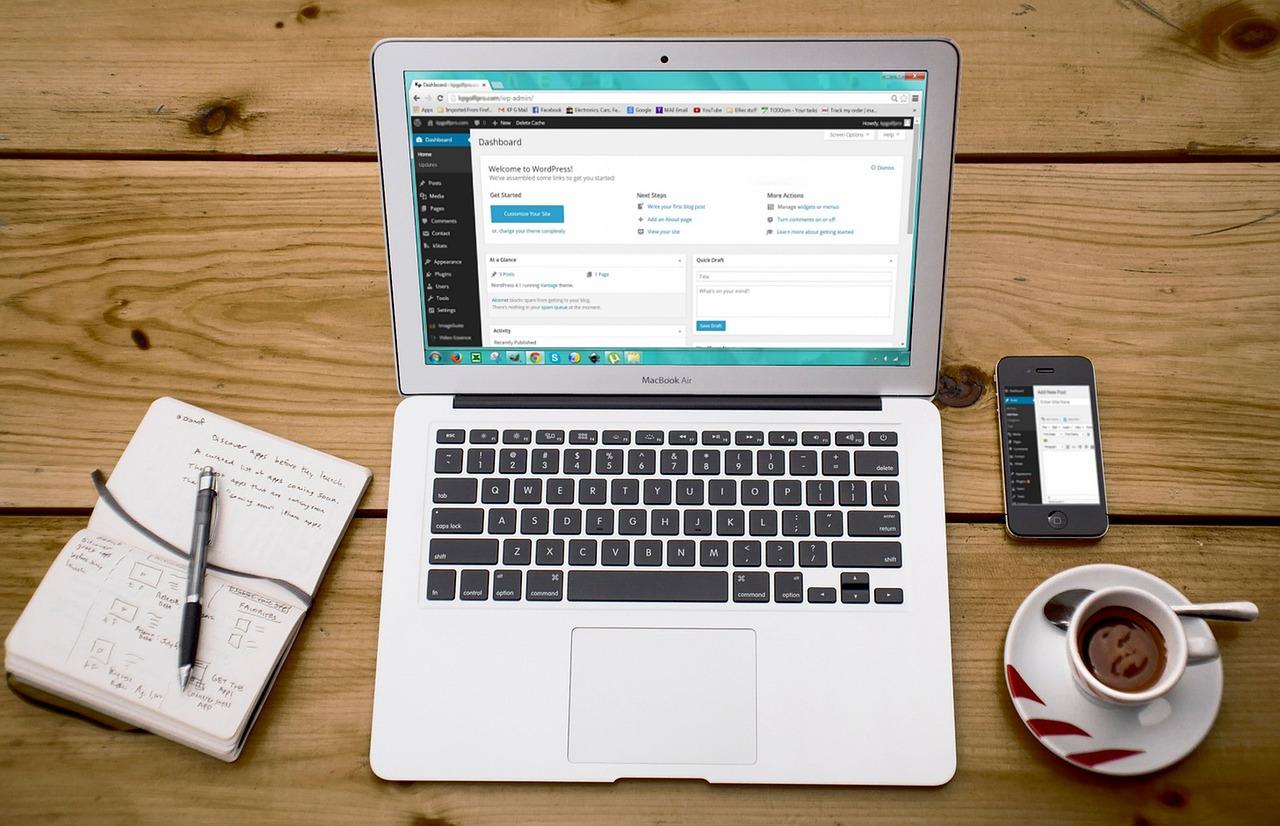Cross-device tracking transforms customer journey analysis by weaving together touchpoints across devices, revealing a holistic view of user behavior. Embrace this powerful tool to inspire tailored experiences, foster deeper connections, and elevate your brand’s impact!
How Cross-Device Tracking Enhances Customer Journey Analysis
In today’s fast-paced digital landscape, understanding the customer journey has never been more critical for businesses striving to create meaningful connections and lasting loyalty. With consumers navigating seamlessly across various devices—from smartphones and tablets to laptops and smartwatches—marketers face the challenge of piecing together fragmented interactions into a cohesive narrative. Enter cross-device tracking, a revolutionary approach that transcends traditional analytics by providing a panoramic view of customer behavior. By harnessing the power of cross-device tracking, businesses can unlock invaluable insights, leading to more personalized experiences and informed decision-making. This article will explore how this innovative strategy not only enhances customer journey analysis but also empowers brands to forge deeper relationships with their audience, ultimately transforming the way they engage, inspire, and innovate. Join us as we delve into the world of cross-device tracking and discover how it can elevate your understanding of the customer journey to new heights.
Understanding the Importance of Cross-Device Tracking in Modern Marketing
In today’s digital landscape, customers often interact with brands across multiple devices—switching from smartphones to tablets and laptops as they navigate their purchasing journey. This trend underscores the critical need for effective cross-device tracking, which allows marketers to gain a holistic view of customer interactions. By understanding the full scope of how users engage with content, businesses can tailor their strategies more effectively.
Why is cross-device tracking essential?
- Comprehensive Data Collection: It gathers data from various platforms, providing a unified perspective of customer behavior.
- Enhanced Personalization: Insights gained from cross-device interactions enable brands to create personalized experiences that resonate with users.
- Improved Budget Allocation: By identifying which devices drive the most conversions, marketers can allocate resources more effectively.
Cross-device tracking not only enriches customer data but also enhances the accuracy of customer journey mapping. For instance, a user might discover a product on their smartphone while commuting, then visit the website on their laptop later to make a purchase. This continuity enables marketers to understand the customer’s path, optimizing touchpoints and marketing efforts in real-time.
Consider the following table that highlights key platforms for cross-device tracking:
| Platform | Features | Benefits |
|---|---|---|
| Google Analytics | Cross-device reporting, real-time tracking | In-depth insights into user behavior |
| Facebook Ads | Multi-platform reach, audience insights | Targeted advertising across devices |
| Segment | Data unification, user identity tracking | Centralized view of customer interactions |
Moreover, brands that leverage cross-device tracking witness a significant increase in customer engagement and loyalty. When users are offered a seamless experience across all their devices, they are more likely to return to a brand. This consistency fosters trust and encourages repeat purchases, which are vital components of long-term success.
In essence, embracing cross-device tracking equips marketers with the tools necessary to not only follow but anticipate customer needs. In an age where every interaction counts, understanding how customers transition between devices can transform marketing strategies, ensuring that businesses remain relevant and responsive in a rapidly evolving marketplace.
Unveiling the Customer Journey: A Multi-Device Perspective
In today’s fast-paced digital landscape, understanding how customers interact with brands across multiple devices is crucial. Cross-device tracking provides invaluable insights into customer behavior, enabling businesses to create a seamless and personalized experience. By effectively monitoring interactions across smartphones, tablets, and desktops, organizations can uncover patterns that inform marketing strategies and enhance customer satisfaction.
The ability to trace a user’s journey from one device to another allows for a more holistic view of their interactions. For instance, a potential customer might discover your product while browsing on their mobile phone, but they may complete the purchase on a desktop later. By capturing these touchpoints, you can better understand the customer’s decision-making process and optimize your marketing efforts accordingly. Here are some key benefits of employing cross-device tracking:
- Enhanced Personalization: Tailoring experiences based on user behavior across devices helps create a cohesive narrative for each customer.
- Accurate Attribution: Assigning credit to the correct touchpoints in the customer journey leads to more effective marketing strategies and budget allocation.
- Improved Customer Retention: Understanding how customers interact with different devices allows businesses to identify potential drop-off points and improve engagement.
Moreover, cross-device tracking facilitates targeted marketing campaigns by allowing brands to reach customers at the right time and place. A user who browses on their mobile device but abandons their cart can be retargeted with personalized ads on their desktop or via email, reminding them of what they left behind. This strategic approach not only drives conversions but also strengthens brand loyalty.
To illustrate the impact of cross-device tracking, consider the following table showcasing the effectiveness of different marketing channels when integrated with cross-device insights:
| Marketing Channel | Conversion Rate |
|---|---|
| Social Media Ads | 15% |
| Email Retargeting | 25% |
| Display Ads | 10% |
By leveraging cross-device insights, businesses can refine their strategies, ensuring that every customer touchpoint is meaningful. As technology continues to evolve, adopting a multi-device perspective becomes not just an advantage but a necessity for brands aiming to stay ahead of the competition. The future of customer journey analysis lies in the ability to connect the dots between devices, ultimately leading to more informed decisions and enhanced customer experiences.
How Cross-Device Tracking Bridges the Gap Between Online and Offline Interactions
In today’s digital landscape, understanding the customer journey has become more critical than ever. As consumers navigate multiple devices—from smartphones and tablets to laptops and smartwatches—tracking their interactions across these platforms provides invaluable insights. This is where cross-device tracking comes into play, allowing brands to create a cohesive narrative that connects online and offline behaviors seamlessly.
Enhancing Personalization
Cross-device tracking empowers brands to deliver personalized experiences. By analyzing customer interactions across devices, companies can identify preferences and behaviors, tailoring their marketing efforts to meet individual needs. This leads to:
- Targeted promotions: Customers receive offers based on their specific interests.
- Consistent messaging: Brands maintain a unified voice across all touchpoints.
- Improved engagement: Customers feel valued and understood, fostering loyalty.
Bridging the Digital and Physical Worlds
Cross-device tracking not only enhances online experiences but also bridges the gap between digital and physical interactions. For instance, a customer may browse a product online, and later visit a brick-and-mortar store. By linking these interactions, businesses can:
- Understand foot traffic: Analyze how online engagement influences in-store visits.
- Optimize inventory: Adjust stock based on online interest and offline purchases.
- Refine location-based marketing: Send targeted promotions to customers in proximity to physical stores.
Data-Driven Decisions
Making informed decisions is essential for any business, and cross-device tracking provides the data necessary to do just that. Companies can leverage insights gained from tracking to:
- Identify trends: Recognize shifts in consumer behavior across various devices.
- Allocate resources: Determine where to invest marketing budgets for maximum impact.
- Enhance customer support: Provide timely assistance based on observed behaviors.
Challenges and Solutions
While cross-device tracking offers immense potential, it also poses challenges such as privacy concerns and data accuracy. To navigate these hurdles, businesses must:
- Implement robust consent protocols: Ensure customer data is handled ethically and transparently.
- Utilize advanced technology: Employ AI and machine learning to refine tracking capabilities.
- Regularly audit data practices: Maintain compliance with regulations and build customer trust.
By embracing cross-device tracking, brands can transform their approach to customer journey analysis, creating a holistic view that fosters deeper connections and drives growth. The future of customer engagement lies in understanding the seamless dance between devices, and those who master this art will undoubtedly lead the way in their respective industries.
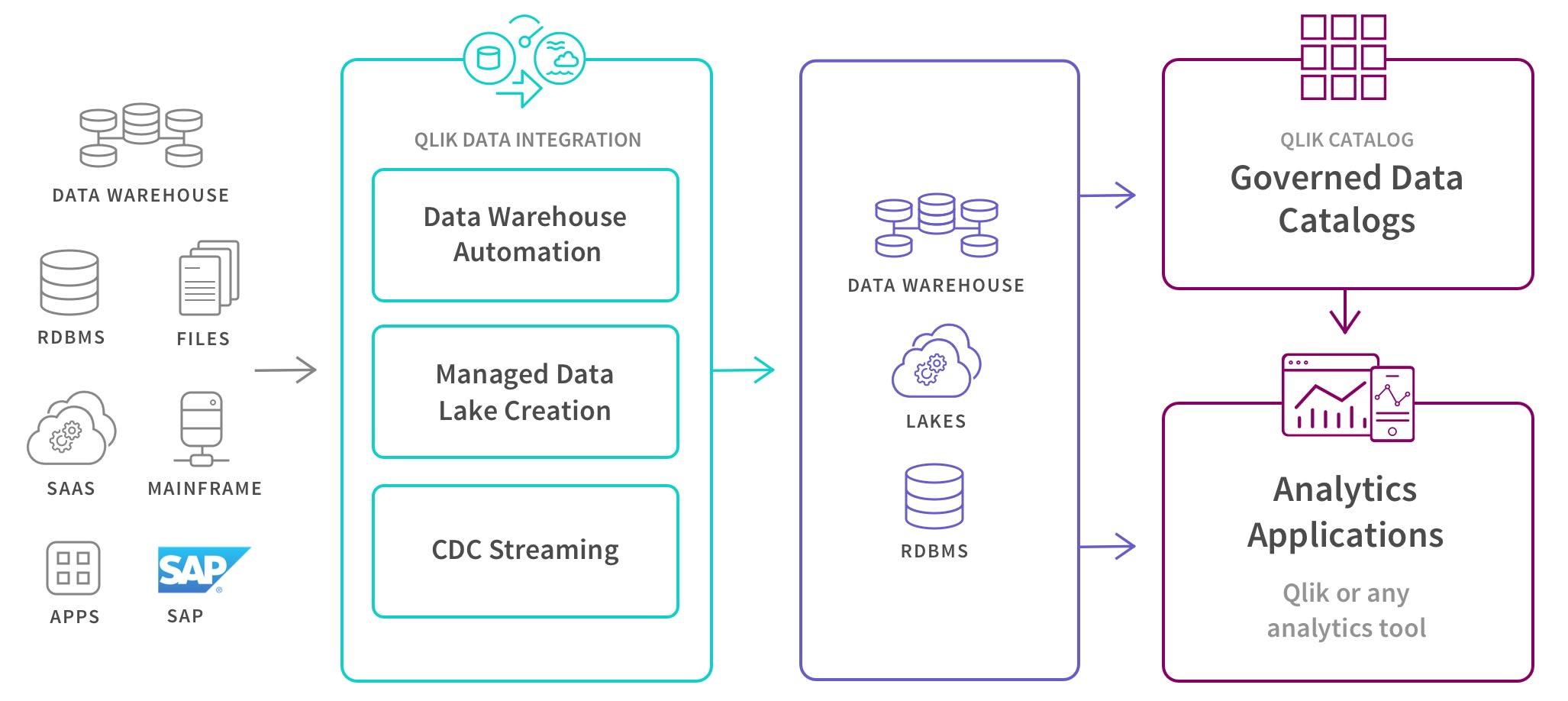
The Role of Data Integration in Seamless Customer Experience
In today’s digital landscape, customers interact with brands across multiple devices, from smartphones and tablets to desktop computers and smart TVs. This multitude of touchpoints means that businesses must harness data integration to create a cohesive customer experience. By leveraging cross-device tracking, companies can gain invaluable insights into how their customers engage with their products and services, ultimately enhancing the overall customer journey.
Understanding Customer Behavior: Cross-device tracking allows brands to understand their customers’ behaviors and preferences across different platforms. When combined with data integration, businesses can:
- Identify customer segments based on their interactions.
- Analyze conversion paths to determine which touchpoints are most effective.
- Monitor engagement metrics to refine marketing strategies.
This comprehensive view of customer interactions enables businesses to personalize their marketing efforts, providing targeted messaging that resonates with individual consumers at the right time and place.
Creating a Unified Experience: When customer data is integrated across devices, it allows for a seamless transition from one platform to another. For instance, a consumer may research a product on their smartphone, add it to their cart, and then complete the purchase on their laptop. With effective data integration, brands can ensure that:
- Shopping cart contents remain consistent across devices.
- Personalized recommendations are aligned with previous interactions.
- Customer support is aware of past issues regardless of the device used.
This level of continuity fosters trust and satisfaction, encouraging repeat purchases and brand loyalty.
| Device | Typical Customer Action | Data Collected |
|---|---|---|
| Smartphone | Browsing & Research | Product views, time spent |
| Tablet | Product Comparison | Comparison data, preferences |
| Desktop | Purchasing | Transaction details, payment method |
Enhancing Marketing Strategies: By utilizing cross-device tracking, businesses can craft highly effective marketing campaigns that appeal to their audience at various stages of the customer journey. Data integration enables marketers to:
- Retarget customers with relevant ads based on their past behaviors.
- A/B test campaigns to determine which approach works best across devices.
- Utilize predictive analytics to anticipate future customer needs.
This strategic use of data not only drives engagement but also results in higher conversion rates and a more satisfied customer base.
Ultimately, the integration of data through cross-device tracking leads to a deeper understanding of customer journeys. This understanding empowers businesses to create tailored experiences that resonate on a personal level, solidifying customer relationships and fostering long-term loyalty.

Empowering Personalization Through Comprehensive Tracking
In today’s digital landscape, understanding the nuances of customer behavior across multiple devices has never been more crucial. With the rise of smartphones, tablets, and desktops, consumers interact with brands through a myriad of platforms, each providing valuable insights into their preferences and needs. By implementing cross-device tracking, businesses can gather comprehensive data that paints a clearer picture of the customer journey.
Cross-device tracking allows for a holistic view of how customers engage with a brand, gathering data from various touchpoints. This data is not just about understanding where customers click or how long they spend on a page; it’s about recognizing patterns and preferences that ultimately lead to meaningful engagements. Here are several key advantages of this approach:
- Improved Customer Insights: By tracking user interactions across devices, brands can identify which channels are most effective in engaging their audience.
- Personalized Experiences: Understanding the journey allows companies to tailor their messaging and offerings, creating a more relevant experience for each customer.
- Enhanced Attribution Models: With comprehensive analytics, businesses can more accurately assign credit to various touchpoints in the customer journey, optimizing their marketing strategies.
- Increased Retention Rates: By recognizing customer behavior and preferences, brands can nurture relationships, leading to improved customer loyalty and retention.
Moreover, the success of cross-device tracking lies in its ability to produce actionable data. For example, businesses can utilize analytics to determine the following:
| Device | Engagement Rate | Conversion Rate |
|---|---|---|
| Smartphone | 75% | 20% |
| Tablet | 60% | 15% |
| Desktop | 85% | 30% |
This table highlights how engagement and conversion rates differ across devices, emphasizing the necessity for brands to allocate resources wisely according to where their audience is most active. By leveraging this data, businesses can not only meet customer expectations but exceed them, fostering a sense of loyalty and trust.
the ultimate goal is to create an environment where customers feel understood and valued. By harnessing the power of cross-device tracking, companies can build a more personalized customer journey, turning data into meaningful interactions that resonate deeply with their audience. This is not just about tracking; it’s about empowering personalization to forge lasting connections that drive success in an ever-evolving marketplace.
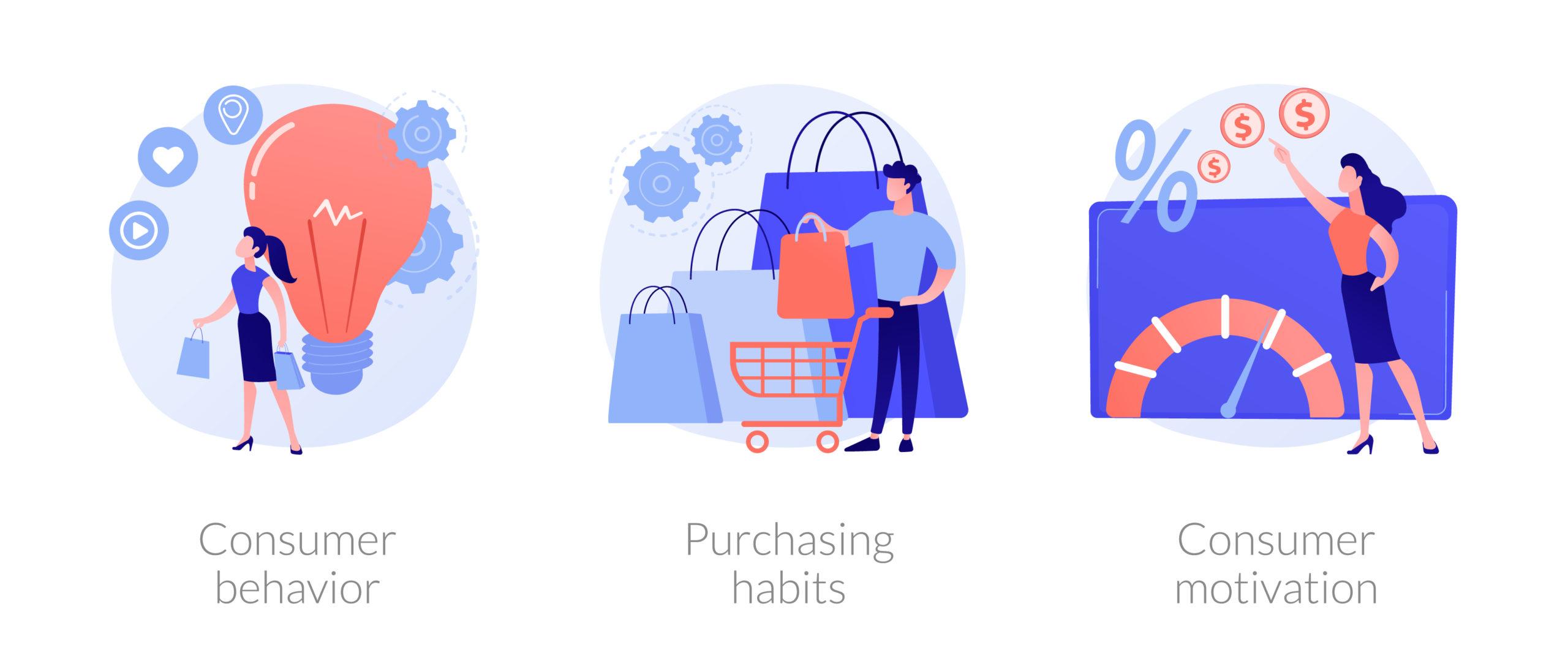
Unlocking Insights: Analyzing Customer Behaviors Across Devices
In today’s fast-paced digital landscape, understanding customer behavior is paramount to delivering exceptional experiences. With consumers seamlessly navigating between smartphones, tablets, and desktops, cross-device tracking has emerged as a game changer for businesses aiming to enhance their customer journey analysis. This multifaceted approach allows brands to piece together a comprehensive view of user interactions across various platforms.
By implementing cross-device tracking, businesses can:
- Identify User Patterns: Gain insights into how customers transition between devices, helping to create a more personalized experience.
- Optimize Marketing Efforts: Tailor advertising strategies based on device usage, ensuring that messages reach customers in the most effective way possible.
- Enhance Customer Engagement: Use data-driven decisions to foster deeper connections, leading to increased loyalty and satisfaction.
One of the most significant advantages of cross-device tracking is the ability to understand the complete customer journey. For instance, a consumer might initially discover a product on their smartphone while commuting, later researching it on a tablet at home, and finally making a purchase on a desktop. This fragmented journey can now be viewed as a cohesive narrative, allowing companies to better understand not just the “what” but the “why” behind each interaction.
To effectively implement cross-device tracking, businesses must invest in robust data analytics tools. These tools can collect and analyze user data points, creating a unified customer profile that encompasses all devices used throughout the buying process. Below is a simple illustration of how data can be captured:
| Device | Action | Timestamp |
|---|---|---|
| Smartphone | Product Discovery | 2023-10-01 09:15 |
| Tablet | Comparison Research | 2023-10-01 18:45 |
| Desktop | Purchase | 2023-10-02 11:30 |
Moreover, cross-device tracking enables businesses to create targeted campaigns that resonate with consumers’ unique behaviors. By understanding the preferences of users across different devices, marketers can implement strategic touchpoints that guide customers smoothly along their journey. Whether it’s retargeting ads on social media or personalized email notifications, the ability to engage customers based on their device interactions can significantly enhance conversion rates.
the power of cross-device tracking lies in its potential to unlock valuable insights about customer behaviors. By harnessing this capability, businesses can create a seamless and engaging customer journey, fostering deeper connections and ultimately driving growth. It’s time to embrace these transformative strategies and revolutionize the way we understand and serve our customers.

The Impact of Cross-Device Tracking on Conversion Rates
In the digital age, understanding the customer journey has become paramount for brands aiming to enhance their conversion rates. Cross-device tracking stands out as a revolutionary approach that allows businesses to connect with their customers across various devices, creating a seamless experience that can significantly increase conversions.
One of the primary advantages of cross-device tracking is the comprehensive view it provides into customer behavior. By following users from their smartphones to tablets, and then to desktop computers, brands can identify patterns and preferences that were previously obscured. This holistic perspective enables marketers to craft more personalized experiences that resonate with users at different touchpoints.
Consider the following benefits of implementing cross-device tracking:
- Enhanced Targeting: With a clearer understanding of user behavior across devices, marketers can tailor their messaging and offers to specific segments, increasing relevance and engagement.
- Increased ROI: By analyzing the full customer journey, businesses can allocate their marketing budgets more effectively, focusing on channels that drive the highest conversions.
- Improved Customer Retention: By recognizing customers’ preferred devices and interactions, brands can foster loyalty with personalized experiences, thereby increasing repeat conversions.
Furthermore, the integration of data analytics with cross-device tracking can lead to more informed decision-making. Instead of relying on traditional metrics, businesses can leverage insights from user interactions across multiple platforms to refine their strategies. This data-driven approach not only enhances conversion rates but also builds stronger relationships with customers, as they feel more understood and valued.
To illustrate the potential gains from effective cross-device tracking, consider the following table that outlines key performance indicators (KPIs) before and after implementing a cross-device strategy:
| Metric | Before Cross-Device Tracking | After Cross-Device Tracking |
|---|---|---|
| Conversion Rate | 2.5% | 5.8% |
| Customer Retention Rate | 40% | 65% |
| Average Order Value | $75 | $100 |
Ultimately, cross-device tracking empowers brands to take a more strategic approach to customer interactions. By embracing this technology, businesses not only enhance their understanding of consumer behavior but also unlock the potential for increased conversion rates, fostering a more connected and satisfied customer base. The future of marketing lies in the ability to recognize and respond to the intricate dance of consumer engagement across devices—an endeavor that can yield impressive rewards for those willing to invest in it.
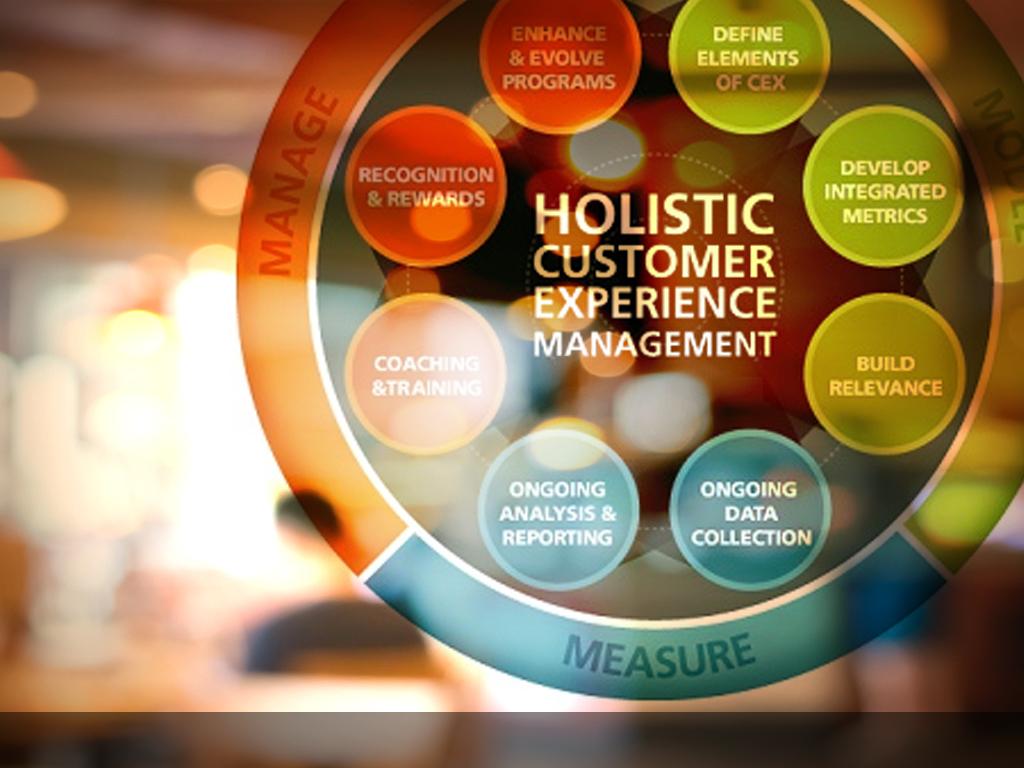
Creating Targeted Campaigns Based on Holistic Customer Data
In the rapidly evolving landscape of digital marketing, harnessing the power of holistic customer data is essential for crafting campaigns that truly resonate. By integrating cross-device tracking, brands can transcend traditional marketing boundaries, allowing for a comprehensive understanding of each customer’s journey across various platforms. This approach not only enhances the accuracy of customer insights but also empowers marketers to create highly targeted campaigns that speak directly to individual preferences and behaviors.
To effectively leverage customer data, consider the following strategies:
- Unified Customer Profiles: Build comprehensive profiles by consolidating data from multiple devices, enabling a 360-degree view of customer interactions.
- Behavioral Insights: Analyze how customers engage with your brand on different platforms to identify patterns and tailor messaging accordingly.
- Personalized Content Delivery: Use insights gained from cross-device behavior to deliver personalized content that resonates with users at every stage of their journey.
Employing cross-device tracking also allows for better attribution modeling, which informs not only where to allocate budget but also how to optimize campaigns in real-time. By understanding the specific touchpoints that lead to conversions, marketers can fine-tune their strategies to focus on high-impact channels. This iterative approach ensures that each dollar spent is maximized for the greatest return on investment.
| Device | Engagement Type | Conversion Rate |
|---|---|---|
| Mobile | Browsing | 15% |
| Tablet | Shopping | 30% |
| Desktop | Checkout | 45% |
Moreover, the ability to track customer behavior across devices fosters a deeper emotional connection between brands and consumers. By engaging customers at the right moments with the right messages, brands can create memorable experiences that encourage loyalty and advocacy. This emotional resonance is key to transforming casual users into committed brand advocates.
the future of targeted marketing lies in understanding and utilizing holistic customer data through cross-device tracking. By implementing this methodology, businesses can not only enhance their customer journey analysis but also unlock the potential for more meaningful engagement and impactful marketing strategies that drive success.

Enhancing Brand Loyalty Through Consistent Engagement Strategies
In today’s digital landscape, understanding the customer journey is paramount for brands aiming to foster loyalty and engagement. Cross-device tracking provides a seamless approach to capturing user interactions across various touchpoints, enabling businesses to create a holistic view of their customers’ experiences. This comprehensive insight allows brands to tailor their engagement strategies more effectively, resulting in higher customer satisfaction and loyalty.
Utilizing cross-device tracking, companies can gain a deeper understanding of how customers transition from one device to another, often starting their journey on mobile and finishing on desktop. This continuous flow of information helps in crafting personalized experiences that resonate with users. Here are some key benefits:
- Enhanced Targeting: Brands can send relevant messages based on the user’s journey across devices, ensuring that each interaction feels timely and contextually relevant.
- Improved Content Delivery: By knowing where a customer is in their journey, businesses can provide tailored content that addresses specific needs and pain points.
- Greater Retention Rates: Personalized experiences lead to increased customer satisfaction, reducing churn and enhancing brand loyalty.
Moreover, analytics derived from cross-device tracking can illuminate patterns in customer behavior that may not be apparent when analyzing single-device data. For instance, a consumer might research a product on their smartphone during their commute, then finalize the purchase on their laptop at home. Recognizing this journey allows brands to strategically position their messaging at each touchpoint to effectively capture the sale.
To illustrate this, consider the following example of a customer’s journey:
| Device | Action | Engagement Strategy |
|---|---|---|
| Mobile | Research | Send a personalized push notification with a discount code. |
| Tablet | Compare Products | Display customer reviews and testimonials to build trust. |
| Desktop | Purchase | Offer a loyalty points reward to encourage future purchases. |
Incorporating these insights into your marketing strategy not only enhances the customer experience but also lays the groundwork for sustained loyalty. When consumers feel understood and valued, they are much more likely to return. Brands that capitalize on the power of cross-device tracking can foster deeper connections and drive long-term loyalty, ensuring they remain top-of-mind in an increasingly competitive marketplace.
Ultimately, the key to cultivating brand loyalty lies in the consistent engagement that speaks directly to the customer’s journey. By leveraging the data provided through cross-device tracking, businesses can ensure that every interaction is meaningful, reinforcing the relationship between the brand and its customers.
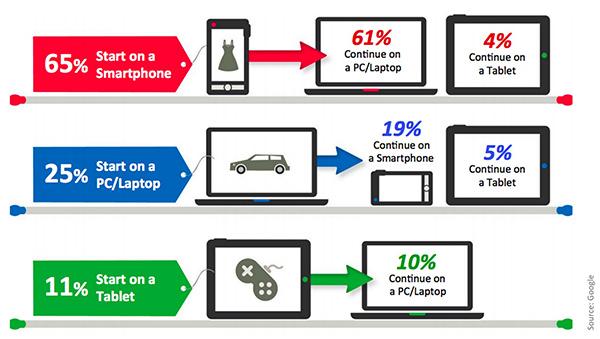
Best Practices for Implementing Cross-Device Tracking Effectively
Implementing cross-device tracking effectively requires a strategic approach to ensure that you capture a holistic view of your customer journey. Here are some of the best practices to consider:
- Establish a Unified Customer Identity: Leverage a comprehensive customer data platform (CDP) to create a single view of your customers across all devices. This helps in recognizing returning visitors, regardless of the device they use.
- Utilize First-Party Data: Focus on collecting first-party data through various touchpoints such as surveys, sign-ups, and transactions. This data is more reliable and helps in building an accurate tracking framework.
- Implement Advanced Tracking Technologies: Use technologies like cookies, device fingerprinting, and server-to-server tracking to gather data from various devices seamlessly. Ensure compliance with privacy regulations while implementing these technologies.
Moreover, it is essential to integrate your marketing tools and analytics platforms. This integration allows for better data correlation and cross-referencing, leading to more profound insights into customer behavior. The following considerations will enhance this integration:
- Consistent Tagging Protocols: Ensure that all your tracking tags are consistent across different platforms and devices. This will minimize discrepancies in data collection.
- Regular Data Audits: Conduct audits periodically to validate the accuracy and completeness of your data. This practice helps in identifying gaps and ensuring that your tracking is working as intended.
- Collaborative Team Efforts: Foster collaboration among marketing, analytics, and IT teams. A unified approach ensures that everyone is on the same page regarding tracking goals and methodologies.
To visualize the impact of your cross-device tracking efforts, consider the following table that summarizes the key metrics you should focus on:
| Metric | Description |
|---|---|
| Customer Lifetime Value (CLV) | Measures the total revenue expected from a customer throughout their relationship with your business. |
| Multi-Device Conversion Rate | Tracks the percentage of users who convert after interacting with multiple devices. |
| Cross-Device Engagement | Analyzes user interactions across devices to understand engagement patterns. |
Lastly, remain adaptable and responsive to changes in customer behavior and technology. As consumer preferences evolve, so should your tracking strategies. Continuous learning and adaptation will not only enhance your cross-device tracking capabilities but also provide invaluable insights into optimizing the customer journey.
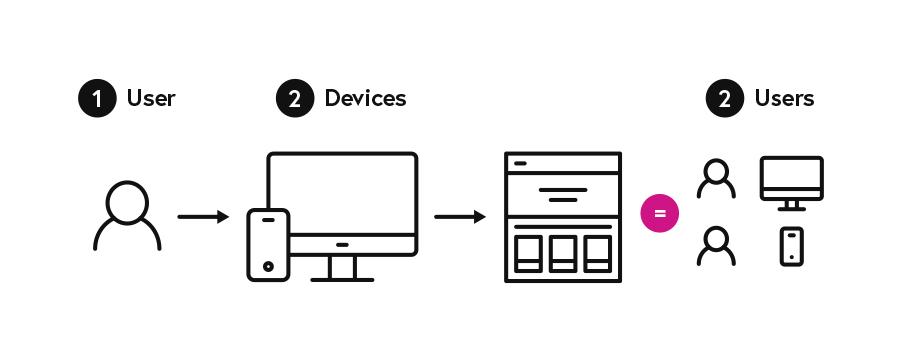
Leveraging Technology to Optimize the Customer Journey
In an increasingly digital world, understanding the customer journey has become essential for brands aiming to foster loyalty and drive sales. Cross-device tracking emerges as a pivotal tool in this quest, enabling businesses to follow their customers seamlessly across multiple platforms. By leveraging this technology, organizations can gain profound insights into consumer behavior, facilitating a more tailored and engaging experience.
One of the remarkable benefits of cross-device tracking is its ability to create a holistic view of the customer journey. Customers today interact with brands across various devices, from smartphones to laptops and tablets. This technology compiles data points from each device, allowing businesses to understand how customers transition between them. Here’s how it enhances customer journey analysis:
- Comprehensive Data Collection: Gather detailed insights from all user interactions, regardless of the device.
- Behavioral Analysis: Identify patterns in customer behavior, revealing preferences and pain points.
- Personalization: Tailor marketing strategies and content to individual customer journeys, enhancing relevance.
Additionally, cross-device tracking empowers brands to measure the effectiveness of marketing campaigns across different channels. By analyzing metrics from multiple touchpoints, companies can pinpoint which strategies yield the highest engagement and conversion rates. This data-driven approach not only enhances marketing ROI but also allows brands to allocate resources more efficiently. Here’s a comparison of engagement metrics:
| Device | Engagement Rate | Conversion Rate |
|---|---|---|
| Smartphone | 65% | 3% |
| Tablet | 50% | 2.5% |
| Desktop | 75% | 4% |
Moreover, utilizing cross-device tracking fosters a more cohesive customer experience. When brands understand how their customers navigate between devices, they can create unified messaging and promotional campaigns. This continuity not only strengthens brand recognition but also cultivates trust, as customers feel understood and valued throughout their journey.
leveraging cross-device tracking can significantly enhance customer retention strategies. By identifying key moments in the customer journey where users may drop off, brands can implement targeted interventions to re-engage these consumers. Whether through personalized offers or reminders, the insights gained from tracking behavior across devices can turn potential losses into lasting relationships.

The Future of Marketing: Embracing a Cross-Device Approach
In today’s rapidly evolving digital landscape, consumers seamlessly transition between various devices throughout their day. This behavior presents both challenges and opportunities for marketers aiming to understand and optimize the customer journey. By adopting a cross-device approach, brands can gather comprehensive insights that lead to improved strategies and enhanced customer experiences.
Cross-device tracking allows marketers to connect user interactions across smartphones, tablets, laptops, and desktops. This holistic view not only illuminates the pathways customers take but also uncovers critical touchpoints that may have been overlooked. To effectively harness these insights, businesses must integrate technology and analytics that enable real-time data collection across all platforms.
Some key benefits of implementing a cross-device approach include:
- Unified Customer Profiles: By tracking users across devices, brands can create a single, coherent customer profile that reflects the complete journey.
- Personalized Marketing Campaigns: Tailored messaging can be delivered based on the user’s behavior on different devices, maximizing engagement.
- Enhanced Attribution Models: Understanding how different devices contribute to conversions allows for better allocation of marketing resources.
- Increased Customer Loyalty: A consistent and personalized experience fosters trust and encourages repeat interactions.
To effectively implement cross-device tracking, marketers should consider the following strategies:
- Invest in Robust Analytics Tools: Leverage tools that offer comprehensive tracking capabilities across multiple devices.
- Utilize Cookies and Device IDs: Employ technologies that enable the identification of users across their devices.
- Focus on Privacy Compliance: Ensure that all tracking practices adhere to privacy laws to maintain customer trust.
| Device | Typical Use Case | Marketing Opportunity |
|---|---|---|
| Smartphone | On-the-go browsing | Localized promotions and instant engagement |
| Tablet | Leisure browsing and shopping | Rich content and immersive experiences |
| Desktop | In-depth research | Detailed information and conversion-focused landing pages |
As the landscape of consumer interaction continues to evolve, embracing a cross-device approach becomes imperative for marketers seeking to remain competitive. By understanding and analyzing customer journeys across multiple platforms, businesses can refine their strategies and create meaningful connections that resonate with their audience. The future of marketing lies in the ability to adapt and innovate—making the customer experience not just a journey, but a memorable adventure.
Championing Privacy: Navigating Data Ethics in Tracking
As businesses strive to understand their customers better, cross-device tracking has emerged as a pivotal tool in gathering nuanced insights into consumer behavior. By following users across multiple devices, companies can create a comprehensive view of the customer journey, ultimately enhancing the personalization of their marketing strategies. However, with this capability comes a profound responsibility to uphold data ethics and prioritize user privacy.
To effectively utilize cross-device tracking while respecting user privacy, businesses must adopt a framework that emphasizes transparency and consent. Engaging customers in a dialogue about how their data is used can foster trust and encourage a willingness to share information. Key strategies include:
- Clear Communication: Clearly explain what data is being collected and for what purpose.
- Opt-In Options: Provide users with the ability to opt-in for tracking features, ensuring they have control over their data.
- Regular Updates: Keep users informed about any changes in data usage policies.
Adopting ethical data collection practices not only helps to cultivate trust but also enhances the quality of the data collected. By ensuring that customers are aware of how their information contributes to better user experiences, businesses can see significant improvements in engagement and loyalty.
Moreover, organizations can leverage anonymization techniques that protect user identities while still gathering valuable insights. Data aggregation methods can help paint a clearer picture of consumer trends without compromising individual privacy. Some of the effective anonymization strategies include:
- Data Masking: Altering data to obscure individual identities.
- Randomization: Introducing variability to datasets to prevent tracing back to an individual.
- Granular Data Usage: Using statistical models that provide insights without revealing personal data.
| Data Collection Method | Privacy Impact | Benefits |
|---|---|---|
| Cross-Device Tracking | High if not managed | Holistic customer view |
| Anonymization | Low | Insight without identity |
| Consent-Based Tracking | Moderate | Trust and engagement |
Ultimately, businesses that embrace ethical practices in data tracking will not only meet regulatory requirements but will also position themselves as leaders in a marketplace increasingly focused on consumer rights. This approach translates into long-term growth, as customers reward brands that respect their privacy with loyalty and advocacy. In this evolving landscape, championing privacy is not just a compliance necessity; it’s a strategic advantage in crafting a more meaningful customer experience.
Transformative Case Studies: Real-World Successes with Cross-Device Tracking
Real-World Successes with Cross-Device Tracking
In the dynamic landscape of digital marketing, businesses are continuously seeking innovative ways to understand their customers better. One such breakthrough is the implementation of cross-device tracking, which allows brands to follow their customers across different devices, creating a cohesive narrative of their journey.
Consider the case of a leading e-commerce retailer that integrated cross-device tracking into their marketing strategy. By analyzing data from multiple sources, they discovered that a significant percentage of their customers switched from mobile to desktop during the purchase process. This insight led to targeted campaigns that effectively re-engaged customers on their preferred device, ultimately increasing conversion rates by 25%.
Another inspiring example is a travel agency that utilized cross-device tracking to refine its customer segmentation. By understanding how different demographics interacted with their site—whether on smartphones, tablets, or laptops—they tailored their marketing messages to resonate more deeply with each group. As a result, they saw a 40% boost in engagement and a notable increase in bookings.
Through the lens of cross-device tracking, one can also examine the success of a financial services company that leveraged insights to enhance the user experience. By recognizing that many users began their journey on mobile but finalized transactions on desktop, they optimized their mobile interface. This improvement led to a remarkable 30% decrease in cart abandonment rates.
These case studies highlight the transformative power of cross-device tracking. By fostering a deeper understanding of customer behavior, brands can create personalized experiences that resonate with their audience. The benefits are clear:
- Enhanced Customer Insights: Gaining a holistic view of the customer journey.
- Increased Conversion Rates: Targeted re-engagement strategies lead to higher sales.
- Improved User Experience: Tailoring interactions based on device usage enhances satisfaction.
The future of customer journey analysis is bright, with cross-device tracking at the forefront. Companies that harness its potential will not only unlock new opportunities for growth but also build lasting relationships with their customers, ensuring they stay ahead in an increasingly competitive market.
| Company | Cross-Device Tracking Benefit | Outcome |
|---|---|---|
| E-Commerce Retailer | Targeted re-engagement | +25% Conversion Rate |
| Travel Agency | Refined customer segmentation | +40% Engagement |
| Financial Services | Optimized user experience | -30% Cart Abandonment |
Frequently Asked Questions (FAQ)
Q&A: How Cross-Device Tracking Enhances Customer Journey Analysis
Q1: What is cross-device tracking, and why is it important for businesses?
A: Cross-device tracking is the practice of identifying and analyzing user behavior across multiple devices, such as smartphones, tablets, and laptops. This holistic view is critical for businesses because it allows them to understand the complete customer journey. In today’s digital age, customers often switch devices during their buying process. Cross-device tracking ensures that no part of their journey is missed, enabling businesses to create more personalized and effective marketing strategies.
Q2: How does cross-device tracking improve the customer experience?
A: By leveraging cross-device tracking, businesses can provide a seamless and coherent experience for their customers. For instance, if a user browses a product on their smartphone but completes the purchase on a desktop, tracking this behavior helps businesses understand preferences and pain points. This insight allows companies to tailor their communications, promotions, and support, ensuring that customers feel valued and understood at every touchpoint. Ultimately, this leads to higher satisfaction and loyalty.
Q3: Can you provide an example of how a company has successfully implemented cross-device tracking?
A: Absolutely! Consider a leading online retailer that utilized cross-device tracking to analyze customer behavior. They noticed that many customers added items to their cart while browsing on mobile but completed the purchase later on their desktop. By sending targeted reminders via email or push notifications, the retailer was able to recapture many of these potential sales. The result? An increase in conversion rates and a deeper understanding of customer preferences across devices.
Q4: What challenges do businesses face when implementing cross-device tracking, and how can they overcome them?
A: One of the main challenges is ensuring data privacy and compliance with regulations, such as GDPR. To overcome this, businesses must adopt transparent practices and secure customer consent. Additionally, integrating data from various sources can be complex. Investing in reliable analytics tools and platforms can bridge these gaps, enabling a more unified view of customer behavior. Embracing these challenges can lead to profound insights and ultimately drive business success.
Q5: What future trends should companies anticipate in cross-device tracking?
A: As technology evolves, artificial intelligence and machine learning will play a larger role in cross-device tracking. These advancements will enhance data analysis, allowing businesses to predict customer behaviors more accurately and create even more personalized experiences. Furthermore, as consumers become more aware of their digital footprints, companies will need to prioritize ethical data practices and enhance transparency in their tracking methods. The future is bright for businesses that embrace these innovations and adapt their strategies accordingly.
Q6: How can businesses get started with cross-device tracking today?
A: To embark on the journey of cross-device tracking, businesses should start by investing in robust analytics platforms that support this functionality. Secondly, they should focus on creating a data collection strategy that prioritizes customer consent and privacy. Training teams to understand the importance of cross-device insights will also drive a culture of data-driven decision-making. By taking these initial steps, businesses can unlock the full potential of their customer journey analysis, leading to enhanced engagement and growth.
Q7: Why is it essential for businesses to embrace cross-device tracking now more than ever?
A: In an increasingly competitive landscape, understanding the customer journey is no longer optional—it’s essential. Cross-device tracking empowers businesses to keep pace with ever-evolving consumer behaviors, enabling them to respond swiftly and wisely. By embracing this approach now, companies can foster deeper connections with their customers, drive loyalty, and ultimately secure their place as leaders in their industry. The journey to understanding and enhancing the customer experience starts today—let’s take that leap together!
Insights and Conclusions
In a world where every click, swipe, and interaction tells a story, cross-device tracking emerges as a powerful ally in the quest for deeper customer insights. By seamlessly weaving together the various threads of a consumer’s journey, brands can not only enhance their understanding of behavior but also forge more meaningful connections. Embracing this technology is not just about keeping up with the competition; it’s about transcending traditional boundaries to deliver personalized experiences that resonate on a profound level.
As you consider the possibilities that cross-device tracking opens up, remember that every data point is a stepping stone toward greater empathy and engagement. When we commit to understanding our customers in their entirety—across all the devices they use—we can cultivate loyalty, drive conversions, and ultimately, create a brand experience that stands out in today’s crowded marketplace.
So, let us inspire one another to harness the power of cross-device tracking. Let us innovate, adapt, and rise to meet the evolving needs of our customers. Together, we can transform raw data into actionable insights, turning insights into strategy, and strategy into extraordinary experiences. The future of customer journey analysis is here—let’s embrace it and lead the way toward a more connected and responsive business landscape.




